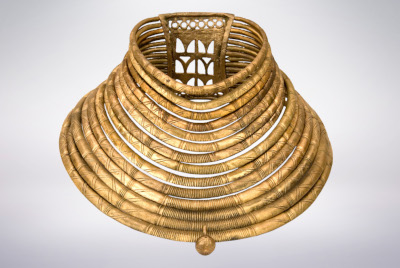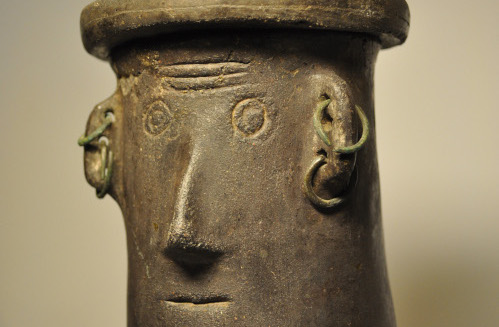Exhibitions
Departments
Face urns, cist and cloche graves
In the middle of the 7th century BC, in the eastern and central parts of Pomerania, between the Parsęta and Vistula rivers, and between the Baltic coast and the Noteć River, a new culture developed, referred to by archaeologists as the Pomeranian culture. Its characteristic trait is the use of the so-called face urns, in which cremated human remains were placed. The vessels were made specifically for funerary purposes. They bear relief or incised representations of the human face, ornaments or weapons. Occasionally, on face urns can be seen figurative scenes, featuring human figures, animals and teams of horses. Such representations are a valuable source of information on life in those times. The origins of face urns, however, remain a mystery. Some scholars trace them to the Etruscan provinces of Italy where human remains were placed in similar vessels known as canopic jars. Other scholars look for the beginnings of this tradition in Mecklenburg and western Pomerania where, towards the end of the Bronze Age, finds were made of the so-called eye urns. Supposedly, they preceded face urns.
Covered with cap-like lids, cinerary urns were placed in stone tombs whose walls consisted of stone slabs, with spaces between them filled with rubble and clay. The grave chamber, covered by a large boulder, held several to over a dozen urns and other vessels as well as grave goods. Another type of grave is known as cloche graves. In this case, urns holding ashes of the dead were covered by large vessels turned upside down, making them look like cloches. In the Early Iron Age, these types of burials became common in Greater Poland, inhabited then by societies living in small and seasonally changed settlements.
Among artefacts of exceptional value dating back to those times are multisegment, richly decorated bronze breast plates, fitted with ornamental clasps characteristic of the Pomeranian culture, and iron pins ornamented with gold places, representing the sun disc.
| <<Bronze Age and the dawn of Iron Age |
Developed Iron Age>> |
Nasza strona internetowa używa plików cookies (tzw. ciasteczka) w celach statystycznych, reklamowych oraz funkcjonalnych. Dzięki nim możemy indywidualnie dostosować stronę do twoich potrzeb. Każdy może zaakceptować pliki cookies albo ma możliwość wyłączenia ich w przeglądarce, dzięki czemu nie będą zbierane żadne informacje. Dowiedz się więcej jak je wyłączyć. OK, Rozumiem



